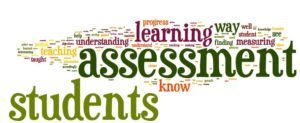Introduction and Background
The entire success of education in carrying out its primary responsibilities of educating as well as socializing students is contingent on the extent of the student’s frequency of class attendance. Therefore, in recognition of th e purpose of regular class attendance to quality education, it has become a priority objective. Training plays its vital part in the student’s standard field. In this research study, the importance of tutoring is evaluated for an emergent reader through the fifth grade to the student who is tutored. It is clear that this student meets all the definitions of diversity by encompassing the acceptance and overall respect. The student understands all the dimensions of ethnicity, race, gender, sexual orientation, age, socio-economic status, religious beliefs, physical abilities and other ideologies.
e purpose of regular class attendance to quality education, it has become a priority objective. Training plays its vital part in the student’s standard field. In this research study, the importance of tutoring is evaluated for an emergent reader through the fifth grade to the student who is tutored. It is clear that this student meets all the definitions of diversity by encompassing the acceptance and overall respect. The student understands all the dimensions of ethnicity, race, gender, sexual orientation, age, socio-economic status, religious beliefs, physical abilities and other ideologies.
Protocols
The pre-post-assessment is the measurement of the entire knowledge or learning received during the class lessons as a result of comparing what the student understood before in the pre-assessment and after the learning experience in the post-assessment. The primary purpose of this is to qualify the knowledge attained by the student with diverse learning styles as well as the learning background. The following are some of the protocols I used for assessment.
Pre-Assessment
- Instructions: This pre-assessment assists me in determining the prior knowledge of the students and also what he already has for the intended objective and goals. The results of the pre-assessment are profoundly influenced by the assessment instrument itself and even the condition of the surrounding environment and administration of the assessment.
- Analyzing the Pre-assessment instructions and results: After I administer the pre-assessment, the next step is to examine the entire effects of the student. This is a crucial step since it informs your plannings. However, I noticed that the pre-assessment should have a quantifiable data. Therefore, in this case, I use qualitative such as raw scores in percentage, averages, gain, etc. Also, the information obtained must be displayed graphically to represent the results virtually.
Post-Assessment
- Instrument: The instrument depends on what you determined as the result of the pre-assessment as well as your entire lessons. Therefore, the post-assessment may be identical or parallel to the pre-assessment. In this case, the post-assessment is similar or parallel to the pre-assessment which confirms that the student is tutored.
- Analyzing the post-assessment results: I compared the post-assessment with the pre-assessment results for the clusters, the entire class, individuals, and subgroup. The student seems to understand the concept of the course well regarding the goals and objectives.
An Evaluation Analysis Of The Results Of The Pre-Assessments
Successful students in the class begin with their entire goals. According to the pre-assessment, it is clear that the student is in line with what I train. The student seems to understand the whole concept taught in class since he has scored above average. Therefore, based on the result of the pre-assessment, the following are some of the primary overall goals for the student;
- More practice and exercises on specific topics
- Development of the learning plan
- Improve the grade from average to a high score.
As a tutor, I would recommend the student in some areas in order to make sure that the student achieves the top scores. First, I would support this student to share a vision. It is wise to review the school’s Mission statement, and the student’s new concept will be tied to the school’s mission statement. I will also recommend the student to focus on achievement. It is clear that setting high standards of education as well as performances is a simple strategy that will assist the student in staying engaged in the class material. In fact, according to the research by The Center for Comprehensive School Reform and Improvement, it looks at various strategies for improving the students class behavior. Therefore, he is expected to get involved in the entire curriculum in order to get motivated. The following area specific recommendation for this students:
- To be provided with hands-on assignments
- To be offered with the support and belief from teachers and parents
- Improve rigor and set a target
Conclusion
Assessment and of course, its related feedback are essential to the overall learning of the student. After analyzing the results of pre-assessment, the student is expected to meet all his goals. According to the goals and objectives I have provided in this case, they are the highlights of what I deem as the essential in creating an atmosphere that encourages the student to achieve his goals. As a teacher, there are further instructions you are required to understand which include knowing the family-background of the student, the learning environment of the student during holidays, and also, the entire behaviors of the student.